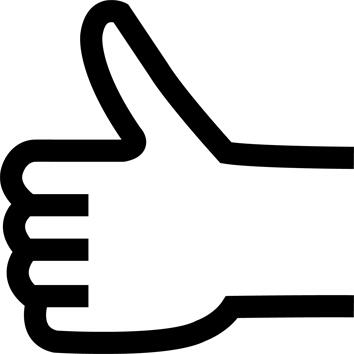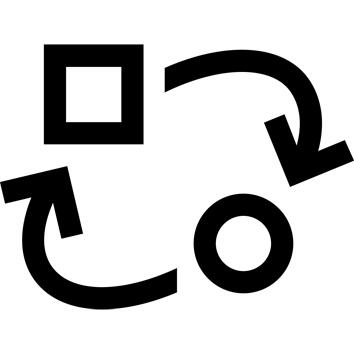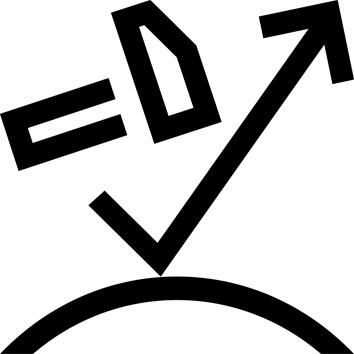The weight of your cue
Your American billiard cue weighs 540 g (19 oz). We cannot guarantee the exact weight of your cue. A tolerance of 10% must be allowed, since wood density can vary, even within the same wood species, depending on the forest harvested, its exposure to the sun or the section of the tree used (bole, crown, top).
The size of your tail
The BC 500 UK/SNK cue measures 145 cm (57 inches): the most common size for billiard cues. Its size will enable you to adopt the right posture for your shots.
For balls further away, you can add an extension to the end of your cue shaft and gain 10 cm. This will take your cue from 145 cm to 155 cm in a matter of seconds.
The balance of your cue
Your cue has a balance of 43 cm, which means that the balance point is 43 cm from the end of the shaft.
If you're using an open bridge, the balance point must be in front of the gripping hand, otherwise the cue will "lift" off the top of your hand.
The balance point is generally of little consequence, apart from personal preference.
A barycenter further back will make your cue feel heavier; if it's further forward, your cue will feel lighter.
Why can't we guarantee the straightness of our cues?
All our cues are manufactured. Their straightness is checked individually, piece by piece, as they leave the factory. However, during transport and storage, billiard cues are subject to variations in temperature and humidity, which can alter their straightness over time.
This stability problem applies to all billiard cues on the market made from wood (maple, ash, poplar, ramin).
Why ash?
Ash is a particularly strong and resistant wood. It can therefore be used to manufacture fine arrows, adapted to the size of the white blackball.
Historically, snooker and English billiard cues were made from ash, as it was (and still is) a widespread wood species in Europe. This choice (accessibility of the raw material) in the manufacture of English billiard cues has been retained.
Physical properties and technical data of ash
Ash, with a density of 0.68 and a Monnin hardness >5, is classified as a medium-hard wood.
This species has a compressive strength of 51 MPa and a static bending strength of 113 MPa. Its longitudinal modulus of elasticity is 12,900 MPa. These are average measurements, which can be consulted, for example, on the CIRAD reference site.
Ash is a strong, resistant wood whose characteristics make it ideally suited to the manufacture of billiard cues.
How to preserve your cue?
Your cue is made of wood, so it's sensitive to changes in temperature and humidity. That's why our team recommends that you keep it safe in a dedicated case or cover, or store it upright in a cue rack. Don't leave it against a wall: you risk deforming it.
Did you know? The process of your cue can be maintained.
Over time, your cue tip may come unstuck - don't worry, it's normal! Repeated impacts with the ball will wear out your cue.
You'll need to change the tip, and to do so, nothing could be simpler:
1/ Remove the damaged tip
2/ Sand the new one with sandpaper
3/ Glue on the new tip
4/ Work on the new tip
Our product engineer tells you more > https://support.decathlon.fr/changer-un-procede-comment-reparer-une-queue-de-billard
Why a tail cut in half?
For easy transport, your cue can be unscrewed in 2 parts at mid-length.
The steel/reinforced joint provides quality clamping and eliminates the impression of a 2-part cue when playing.
And with its ultra-fast screw thread, you can assemble and disassemble your cue in just 4 turns.
What's the purpose of the bumper at the end of the tail?
The heel of the shaft (the part you put on the floor!) is made of rubber: no risk of damaging the cue or the floor when you wait between shots!
Team tip: how to make an easel?
The positioning of your hand is crucial to the success of your billiard shots. It's called the "rack". There are many different hand positions, depending on the shot you're making and the position of the balls on the table.
Nicolas Henric, coach of the French Blackball (English billiards) teams, and Maeva Brionne, international player, explain how to correctly set up your bridge > https://www.youtube.com/watch?v=355CLLm9SnI
What is snooker?
It's played with 22 balls: 15 red and 6 colored. The Snooker table, with its dimensions of 3.80 m long and 1.80 m wide, is the largest billiard table. And to complicate matters, its pockets are small (very small). As you can see, "precision" is the watchword for this game.
Good to know: you can score bridges by playing defense!
Want to find out more? https://conseilsport.decathlon.fr/billard-decouvrez-le-snooker
What is blackball?
This is probably the most compact billiard table. Also known as blackball, pool or eight-pool, it's played with 7 red balls, 7 yellow balls and 1 black ball. To win a game, a player or team must pocket their entire group of balls, ending with the black. This game is known for being both defensive and strategic.
To find out more about this discipline: https://conseilsport.decathlon.fr/quest-ce-que-le-billard-anglais-blackball




